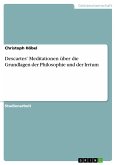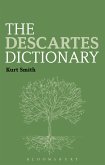This book offers a new type of working tool for Cartesian studies. It presents the literature of the last 160 years in alphabetical order (Part Two), combined with a systematic analytical survey (Part One) and a detailed topical index to the whole (Part Three). This organization makes it possible to turn bibliogra phy from a repository of references into a workshop of research. The system atic survey of Part One and the topical index of Part Three, together, offer a mise au point of Descartes studies over their full historical and topical range. The results have often been surprising and illuminating to the author, and if his experience is any guide, the reader, too, will begin to wonder about certain seemingly well-settled points, or marvel at the Protean shapes which our elusive philosopher assumes when mighty commentators force him to reveal his true nature. A work which has been in the making for fifteen years must show the traces of expansion in scope, and changes in evaluation. Bibliographia cartesiana amends my Descartes chapter in A Critical Bibliography of French Literature, v. 3, 1961 (see no. I9a), and supersedes an earlier version of Parts One and Two, published in 1959 under the main title Descartes and his Philosophy, v. 1 (set: no. I8a). Part I (Introduction to Descartes Studies) divides the field into eleven broad areas.








